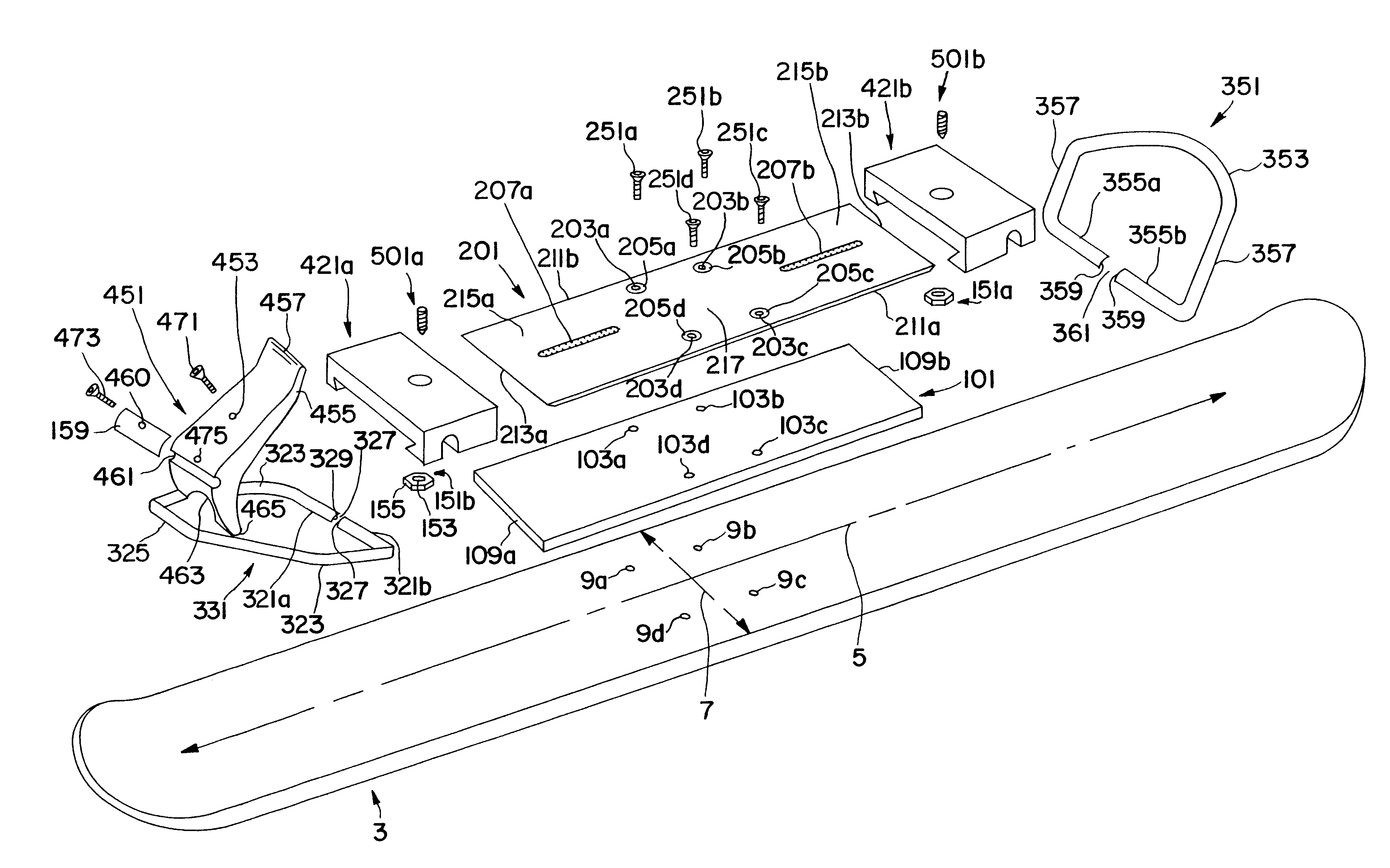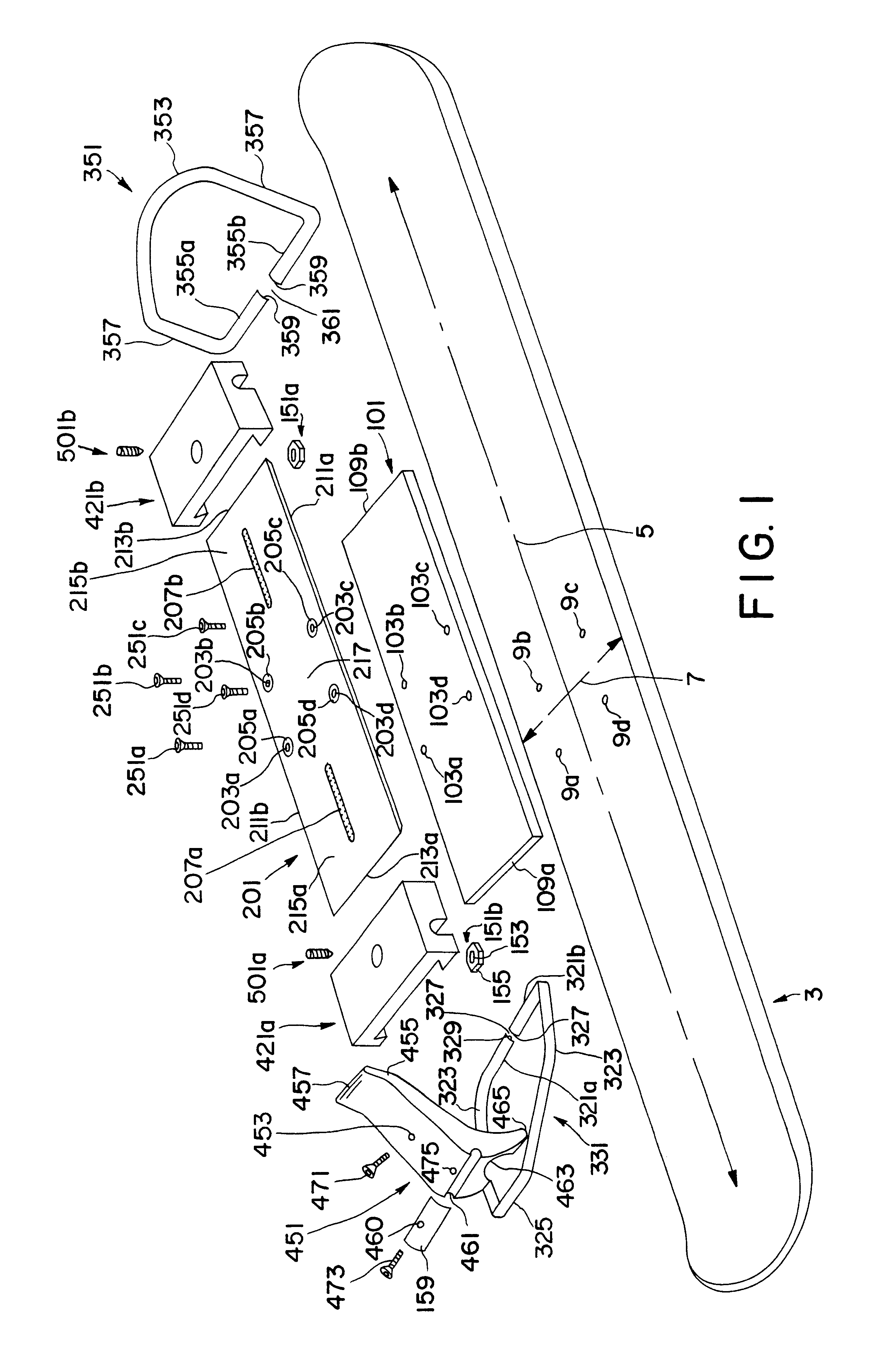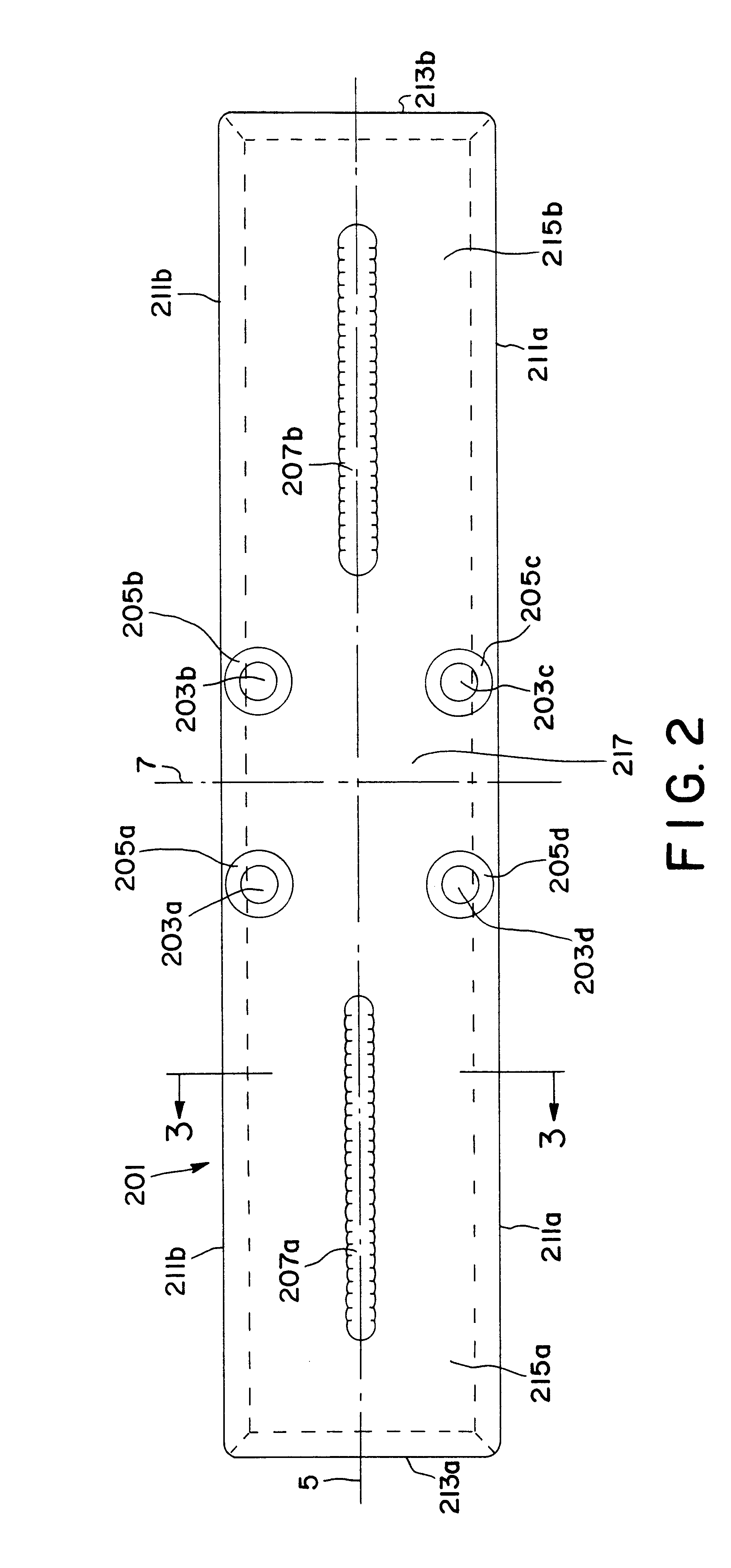Boot binding system
a technology of boot support and binding mechanism, which is applied in the direction of snowboard bindings, skis, skates, etc., can solve the problems of no substantial evidence for the case of skiboard safety release bindings, the need for boot support to be attached, and the snowboard bindings do not employ a safety release mechanism, etc., to achieve low manufacturing cost, high performance, and ease of us
- Summary
- Abstract
- Description
- Claims
- Application Information
AI Technical Summary
Problems solved by technology
Method used
Image
Examples
embodiment
Rectangular Platform and Rectangular Bail Block Embodiment
FIGS. 12 and 13 show a rectangular platform 750 having a rectangular platform bottom 752, rectangular platform edges 754a,b, and a rectangular platform top 756. A rectangular bail block 774 has a rectangular bail block top 772 generally in contact with boot 601. A rectangular bail block outer edge 770a,b limits the extent of rectangular bail block 774. A rectangular bail block bottom wall thickness 768a,b is opposite rectangular bail block top 772. Rectangular bail block recessed walls 766a,b approximately face each other. A rectangular bail block recessed bottom 764a,b opposes rectangular platform bottom 752. A rectangular bail block recessed edge 762a,b is adjacent to rectangular platform edges 754a,b. A rectangular bail block recessed inner 760 is opposite rectangular platform top 756. As shown in FIG. 13, rectangular platform 750 and rectangular bail block 774 are sized such that a rectangular lock down gap 776 exists whe...
PUM
 Login to View More
Login to View More Abstract
Description
Claims
Application Information
 Login to View More
Login to View More - R&D
- Intellectual Property
- Life Sciences
- Materials
- Tech Scout
- Unparalleled Data Quality
- Higher Quality Content
- 60% Fewer Hallucinations
Browse by: Latest US Patents, China's latest patents, Technical Efficacy Thesaurus, Application Domain, Technology Topic, Popular Technical Reports.
© 2025 PatSnap. All rights reserved.Legal|Privacy policy|Modern Slavery Act Transparency Statement|Sitemap|About US| Contact US: help@patsnap.com



